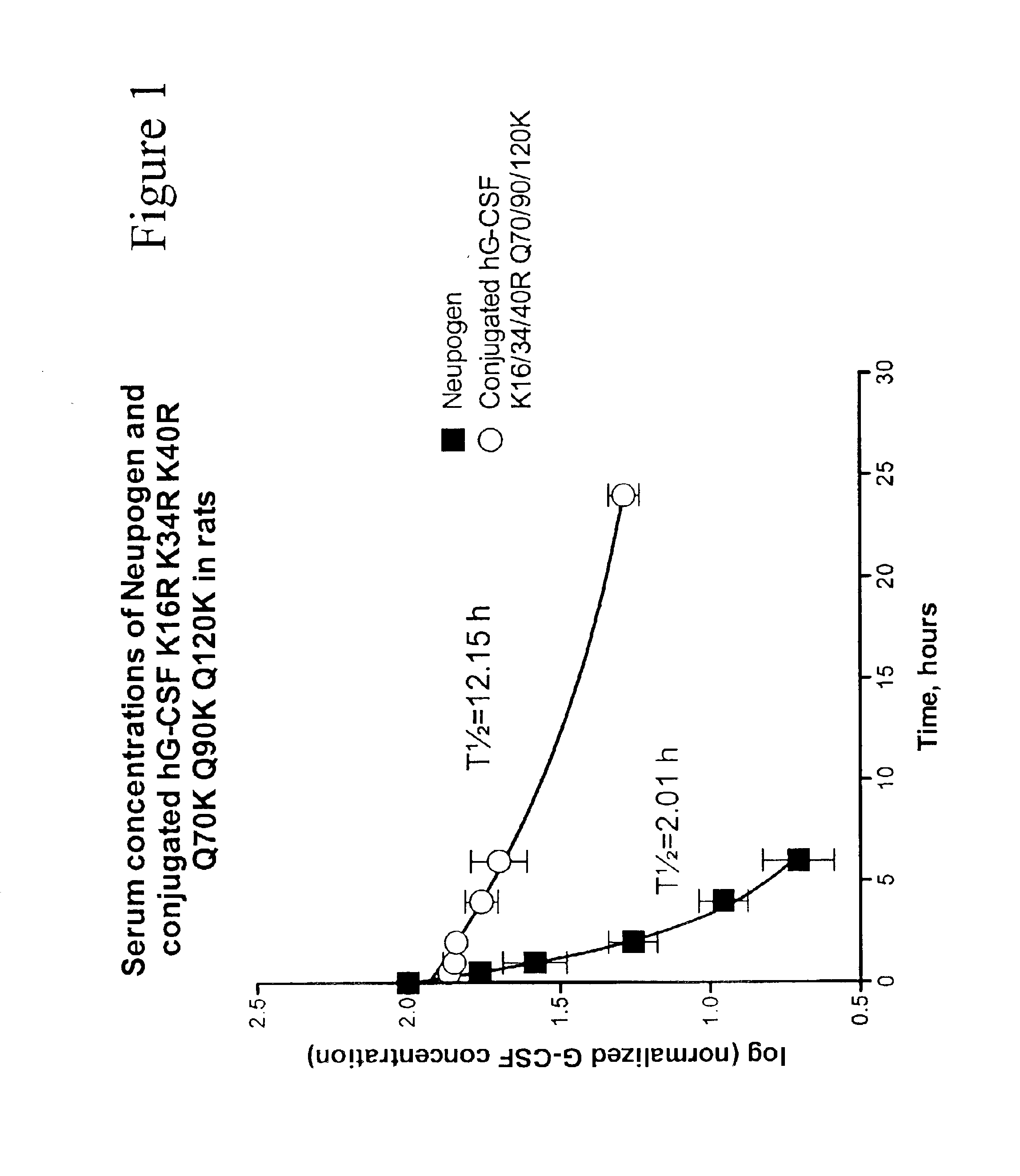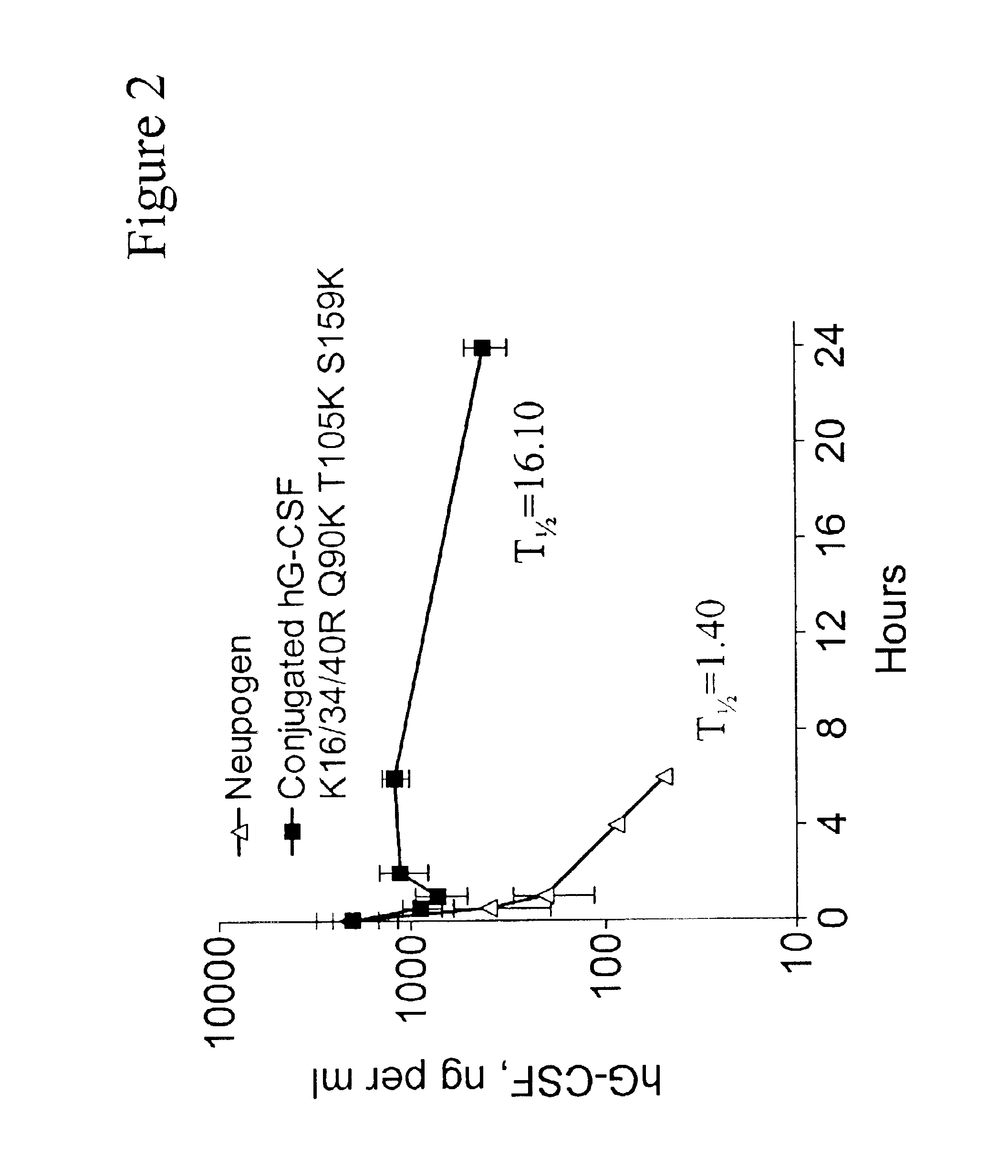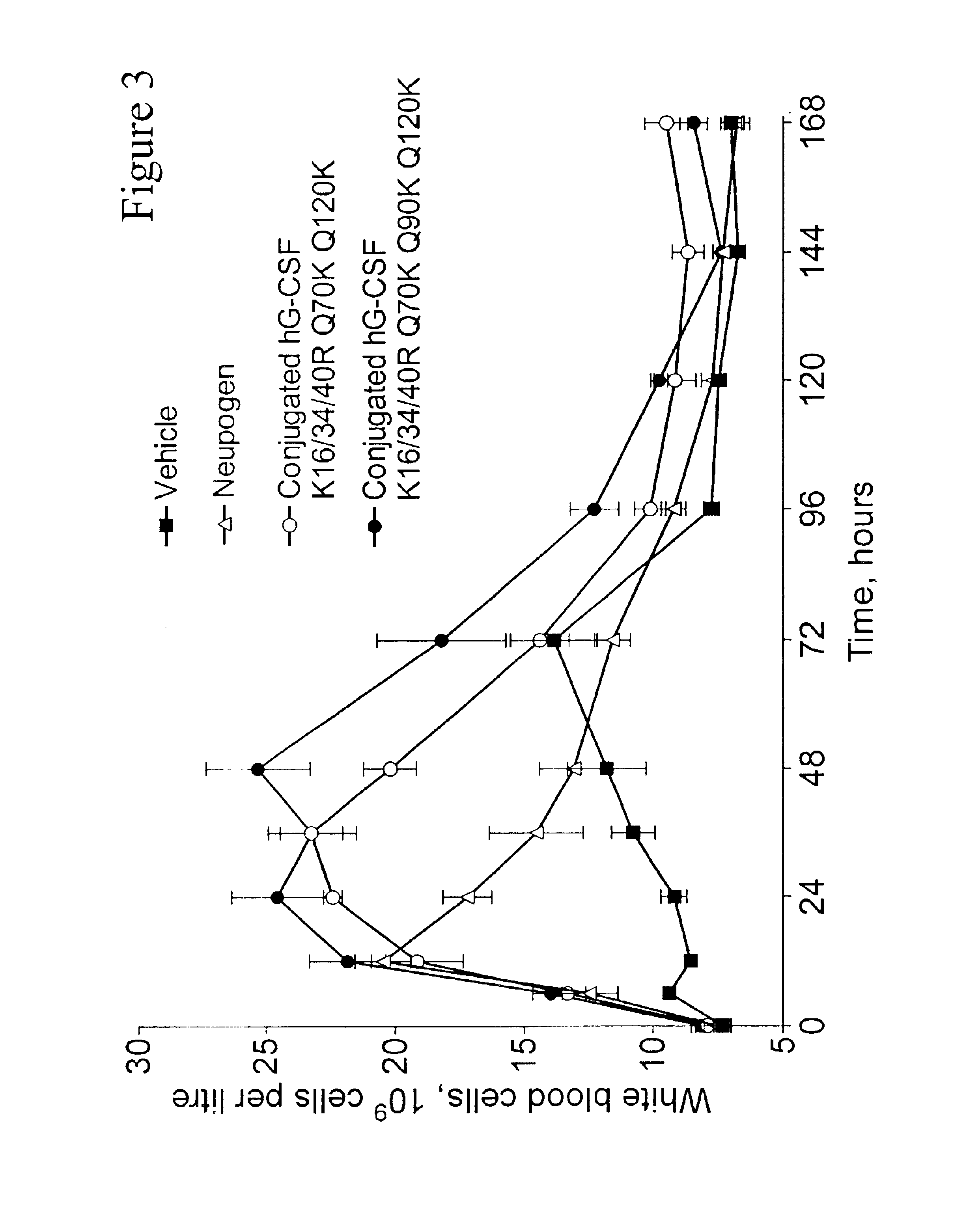G-CSF conjugates
a conjugate and csf technology, applied in the field of specific conjugates, can solve the problems of dose-dependent bone pain, relative minor infections can be serious and even life-threatening, and patients become neutropenic after chemotherapy, so as to reduce in vitro bioactivity, improve properties, and accelerate neutrophil recovery
- Summary
- Abstract
- Description
- Claims
- Application Information
AI Technical Summary
Benefits of technology
Problems solved by technology
Method used
Image
Examples
example 1
Construction and Cloning of Synthetic Genes Encoding hG-CSF
The following DNA fragments were synthesized following the general procedure described by Stemmer et al. (1995), Gene 164, pp. 49-53:
Fragment 1, consisting of a Bam HI digestion site, a sequence encoding the YAP3 signal peptide (WO 98 / 32867), a sequence encoding the TA57 leader sequence (WO 98 / 32867), a sequence encoding a KEX2 protease recognition site (AAAAGA), a sequence encoding hG-CSF with its codon usage optimized for expression in E. coli, (SEQ ID NO:2) and a Xba I digestion site.
Fragment 2, consisting of a Bam HI digestion site, a sequence encoding the YAP3 signal peptide (WO 98 / 32867), a sequence encoding the TA57 leader sequence (WO 98 / 32867), a sequence encoding a histidine tag (SEQ ID NO:5), a sequence encoding a KEX2 protease recognition site (AAAAGA), a sequence encoding hG-CSF with its codon usage optimized for expression in E. coli, (SEQ ID NO:2) and a Xba I digestion site.
Fragment 3, consisting of a Nde I di...
example 2
Expression of hG-CSF in S. cerevisiae and E. coli
Transformation of Saccharomyces cerevisiae YNG318 (available from the American Type Culture Collection, VA, USA as ATCC 208973) with either plasmid pG-CSFcerevisiae or pHISG-CSFcerevisiae, isolation of transformants containing either of the two plasmids, and subsequent extracellular expression of hG-CSF without and with the HIS tag, respectively, was performed using standard techniques described in the literature. Transformation of E. coli BL21 (DE3) (Novagen, Cat. No. 69387-3) with pG-CSFcoli, isolation of transformants containing the plasmid and subsequent expression of hG-CSF in the supernatant and in the periplasm of the cell was performed as described in the pET System Manual (8.sup.th edition) from Novagen.
Expression of hG-CSF by S. cerevisiae and E. coli was verified by Western Blot analysis using the ImmunoPure Ultra-Sensitive ABC Rabbit IgG Staining kit (Pierce) and a polyclonal antibody against hG-CSF (Pepro Tech EC Ltd.). I...
example 3
Generation of a Stable CHO-KI G-CSF Producer
The day before transfection the CHO K1 cell line (ATCC #CCl-61) is seeded in a T-25 flask in 5 ml DMEM / F-12 medium (Gibco # 31330-038) supplemented with 10% FBS and penicillin / streptomycin. The following day (at nearly 100% confluency) the transfection is prepared: 90 .mu.l DMEM medium without supplements is aliquoted into a 14 ml polypropylene tube (Coming). 10 .mu.l Fugene 6 (Roche) is added directly into the medium and incubated for 5 min at room temperature. In the meantime 5 .mu.g plasmid pG-CSFCHO is aliquoted into another 14 ml polypropylene tube. After incubation the Fugene 6 mix is added directly to the DNA solution and incubated for 15 min at room temperature. After incubation the whole volume is added drop-wise to the cell medium.
The next day the medium is exchanged with fresh medium containing 360 .mu.g / ml hygromycin (Gibco). Every day hereafter the selection medium is renewed until the primary transfection pool has reached 100...
PUM
| Property | Measurement | Unit |
|---|---|---|
| molecular weight | aaaaa | aaaaa |
| weight | aaaaa | aaaaa |
| molecular weight | aaaaa | aaaaa |
Abstract
Description
Claims
Application Information
 Login to View More
Login to View More - R&D
- Intellectual Property
- Life Sciences
- Materials
- Tech Scout
- Unparalleled Data Quality
- Higher Quality Content
- 60% Fewer Hallucinations
Browse by: Latest US Patents, China's latest patents, Technical Efficacy Thesaurus, Application Domain, Technology Topic, Popular Technical Reports.
© 2025 PatSnap. All rights reserved.Legal|Privacy policy|Modern Slavery Act Transparency Statement|Sitemap|About US| Contact US: help@patsnap.com



